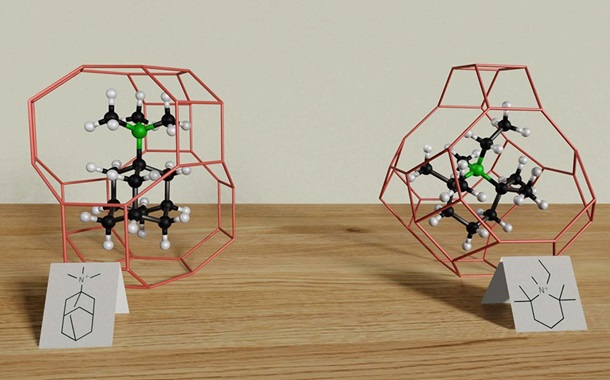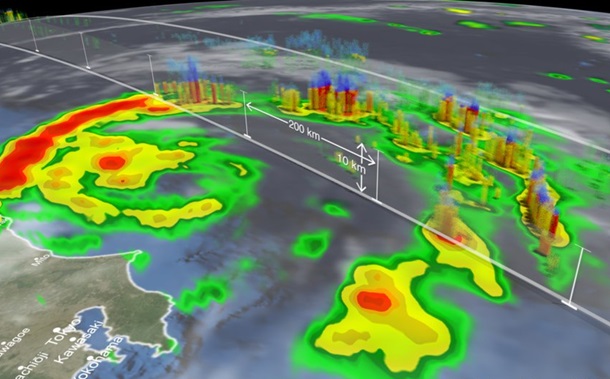Optimizing AIGC Technology for IoT Devices with Deep Learning
Downloads
The present article intends to explore how a deep learning model could be applied to improve the ability of AI-generated content (AIGC) technology in graphic recognition within the IoT ecosystem. Objectives: This research pursues two key objectives: first, the model is compressed to a smaller size and decreased computational cost for on-device deployment on resource-poor IoT devices, and second, it achieves better adaptability through data augmentation and regularization techniques. Methods/Analysis: A purpose-built CNN design was built and trained to solve IoT-specific constraints. Model compression techniques such as weight pruning and quantization were used to reduce resource requirements. To ameliorate this, we applied data augmentation techniques like rotation, shear, and zoom, and regularization techniques like dropout to avoid overfitting. The work was done on MNIST and CIFAR-10 typical datasets using TensorFlow as a deep learning framework. Results: The pattern-recognition accuracy on MNIST and CIFAR-10 datasets achieved are 99.5% and 89.2%, respectively. Moreover, the recognition speed was improved by around 30% since the computational cost of the DL algorithm is effective because of parallel processing, resulting in lower processing time. The compressed model overcame the massive computational complexity, which is more suitable for resource-limited IoT devices. Novelty/Improvement: a new methodology is presented that integrates CNN optimization and model compression in conjunction with sophisticated regularization techniques to develop a suitable solution for the peculiarities of the IoT landscape. Ultimately, overcoming the universal problems like limited resources and real-time processes in this research helps to improve the technological and theoretical support for practical IoT applications and accelerate the practical implementation of AIGC performance optimization across various industries such as smart homes, smart transportation, and smart security.
Downloads
[1] Chang, W.-J., Chen, L.-B., Sie, C.-Y., & Yang, C.-H. (2021). An Artificial Intelligence Edge Computing-Based Assistive System for Visually Impaired Pedestrian Safety at Zebra Crossings. IEEE Transactions on Consumer Electronics, 67(1), 3–11. doi:10.1109/tce.2020.3037065.
[2] Feng, C., Gu, J., Zhu, H., Ying, Z., Zhao, Z., Pan, D. Z., & Chen, R. T. (2022). A Compact Butterfly-Style Silicon Photonic–Electronic Neural Chip for Hardware-Efficient Deep Learning. ACS Photonics, 9(12), 3906–3916. doi:10.1021/acsphotonics.2c01188.
[3] Zhu, B., Yang, C., Yu, C., & An, F. (2018). Product Image Recognition Based on Deep Learning. Journal of Computer-Aided Design & Computer Graphics, 30(9), 1778. doi:10.3724/sp.j.1089.2018.16849.
[4] Dourado, C. M. J. M., da Silva, S. P. P., da Nobrega, R. V. M., Reboucas Filho, P. P., Muhammad, K., & de Albuquerque, V. H. C. (2021). An Open IoHT-Based Deep Learning Framework for Online Medical Image Recognition. IEEE Journal on Selected Areas in Communications, 39(2), 541–548. doi:10.1109/jsac.2020.3020598.
[5] Pertusa, A., Gallego, A. J., & Bernabeu, M. (2018). MirBot: A collaborative object recognition system for smartphones using convolutional neural networks. Neurocomputing, 293(6), 87–99. doi:10.1016/j.neucom.2018.03.005.
[6] Demir, H. S., Christen, J. B., & Ozev, S. (2020). Energy-Efficient Image Recognition System for Marine Life. IEEE Transactions on Computer-Aided Design of Integrated Circuits and Systems, 39(11), 3458–3466. doi:10.1109/TCAD.2020.3012745.
[7] Lim, L. A., & Yalim Keles, H. (2018). Foreground segmentation using convolutional neural networks for multiscale feature encoding. Pattern Recognition Letters, 112, 256–262. doi:10.1016/j.patrec.2018.08.002.
[8] Zhang, H., Jiang, B., Cheng, C., Huang, B., Zhang, H., Chen, R., Xu, J., Huang, Y., Chen, H., Pei, W., Chai, Y., & Zhou, F. (2023). A Self-Rectifying Synaptic Memristor Array with Ultrahigh Weight Potentiation Linearity for a Self-Organizing-Map Neural Network. Nano Letters, 23(8), 3107–3115. doi:10.1021/acs.nanolett.2c03624.
[9] Grm, K., Struc, V., Artiges, A., Caron, M., & Ekenel, H. K. (2018). Strengths and weaknesses of deep learning models for face recognition against image degradations. IET Biometrics, 7(1), 81–89. doi:10.1049/iet-bmt.2017.0083.
[10] Grm, K., Štruc, V., Artiges, A., Caron, M., & Ekenel, H. K. (2017). Strengths and weaknesses of deep learning models for face recognition against image degradations. IET Biometrics, 7(1), 81–89. doi:10.1049/iet-bmt.2017.0083.
[11] Wang, T., Xu, L., & Li, J. (2021). SDCRKL-GP: Scalable deep convolutional random kernel learning in gaussian process for image recognition. Neurocomputing, 456(7), 288–298. doi:10.1016/j.neucom.2021.05.092.
[12] Liu, Y., Dong, H., & Wang, L. (2021). Trampoline Motion Decomposition Method Based on Deep Learning Image Recognition. Scientific Programming, 2021(9), 1–8. doi:10.1155/2021/1215065.
[13] Schütt, K. T., Sauceda, H. E., Kindermans, P.-J., Tkatchenko, A., & Müller, K.-R. (2018). SchNet – A deep learning architecture for molecules and materials. The Journal of Chemical Physics, 148(24), 241722. doi:.1063/1.5019779.
[14] Andriyanov, N. A., Dementiev, V. E., & Kargashin, Y. D. (2021). Analysis of the impact of visual attacks on the characteristics of neural networks in image recognition. Procedia Computer Science, 186(12), 495–502. doi:10.1016/j.procs.2021.04.170.
[15] Cheng, X., Ren, Y., Cheng, K., Cao, J., & Hao, Q. (2020). Method for Training Convolutional Neural Networks for In Situ Plankton Image Recognition and Classification Based on the Mechanisms of the Human Eye. Sensors, 20(9), 2592. doi:10.3390/s20092592.
[16] Niederberger, C. (2021). Re: Web-and Artificial Intelligence-Based Image Recognition for Sperm Motility Analysis: Verification Study. Journal of Urology, 206(1), 145-145.
[17] Leroux, S., Bohez, S., De Coninck, E., Van Molle, P., Vankeirsbilck, B., Verbelen, T., Simoens, P., & Dhoedt, B. (2019). Multi-fidelity deep neural networks for adaptive inference in the internet of multimedia things. Future Generation Computer Systems, 97(8), 355–360. doi:10.1016/j.future.2019.03.001.
[18] Horng, S.-J., Supardi, J., Zhou, W., Lin, C.-T., & Jiang, B. (2022). Recognizing Very Small Face Images Using Convolution Neural Networks. IEEE Transactions on Intelligent Transportation Systems, 23(3), 2103–2115. doi:10.1109/tits.2020.3032396.
[19] Wu, K., Xu, G., Zhang, Y., & Du, B. (2018). Hyperspectral image target detection via integrated background suppression with adaptive weight selection. Neurocomputing, 315, 59–67. doi:10.1016/j.neucom.2018.06.017.
[20] Mariappan, G., Satish, A. R., Reddy, P. V. B., & Maram, B. (2021). Adaptive partitioning-based copy-move image forgery detection using optimal enabled deep neuro-fuzzy network. Computational Intelligence, 38(2), 586-609. doi:10.1111/coin.12484.
[21] Zhang, X., Liu, G., Zhang, C., Atkinson, P. M., Tan, X., Jian, X., Zhou, X., & Li, Y. (2020). Two-Phase Object-Based Deep Learning for Multi-Temporal SAR Image Change Detection. Remote Sensing, 12(3), 548. doi:10.3390/rs12030548.
[22] Huang, R., Wang, R., Zhang, Y., Xing, Y., Fan, W., & Yung, K. L. (2021). Selecting change image for efficient change detection. IET Signal Processing, 16(3), 327–339. doi:10.1049/sil2.12095.
[23] Gu, Y., Vyas, K., Yang, J., & Yang, G. (2019). Transfer Recurrent Feature Learning for Endomicroscopy Image Recognition. IEEE Transactions on Medical Imaging, 38(3), 791–801. doi:10.1109/tmi.2018.2872473.
[24] Liu, Y., Du, H., Niyato, D., Kang, J., Xiong, Z., Miao, C., Shen, X., & Jamalipour, A. (2024). Blockchain-Empowered Lifecycle Management for AI-Generated Content Products in Edge Networks. IEEE Wireless Communications, 31(3), 286–294. doi:10.1109/MWC.003.2300053.
[25] Liu, L., He, M., & Jeon, S. (2025). An AI-Generated Content-Based Access Control Strategy for WBANs in Healthcare Electronics Applications. IEEE Transactions on Consumer Electronics, 71(1), 1332–1342. doi:10.1109/TCE.2024.3412942.
[26] Akram, J., Aamir, M., Raut, R., Anaissi, A., Jhaveri, R. H., & Akram, A. (2025). AI-Generated Content-as-a-Service in IoMT-Based Smart Homes: Personalizing Patient Care With Human Digital Twins. IEEE Transactions on Consumer Electronics, 71(1), 1352–1362. doi:10.1109/TCE.2024.3409173.
[27] Khoramnejad, F., & Hossain, E. (2025). Generative AI for the Optimization of Next-Generation Wireless Networks: Basics, State-of-the-Art, and Open Challenges. IEEE Communications Surveys & Tutorials. doi:10.1109/COMST.2025.3535554.
- This work (including HTML and PDF Files) is licensed under a Creative Commons Attribution 4.0 International License.






















